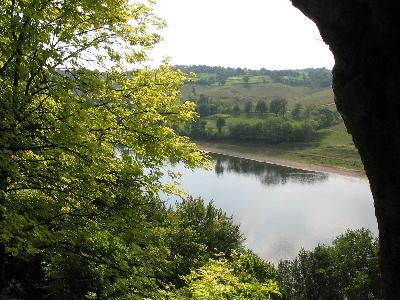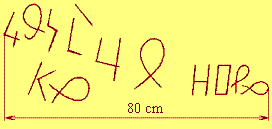As the archaeology evidences, at least from the end of the III millennium BC, and probably earlier, the Pit culture people which we associate with the Turkic tribes of the Bulgars began entering on the right bank of the Dnieper. The newcomers brought their own items in the Trypilla culture prevalent here. For example, remains of the Usatovo group of the Trypillian culture have clear traces of connections with the Pit culture spread on the area of the Dnieper Left Bank. Obviously, these remains were left by Bulgar tribes that originally reached the rivers Syniukha and Ingulets and then moved to the north-west along the banks of the Dniester. Human skeleton, buried in the back with knees bent, ie in a pose typical for people of so-called "Kurgan" cultures, which was found near the village of Nezvisko in Ivano-Frankivsk Region, may indicate this motion. In addition, Trypillian pottery mixed with sand and crushed shells, the peculiarity of the Pit culture, can be found in these places. Anthropological study of the archaeological sites of the North-Western Black Sea suggests the process of mating and mutual assimilation of the Trypillian people and tribes of Pit culture which came here.
Place names remained in the West Ukraine, Poland and Hungary till now help to track the specific location of settlements of ancient Bulgars, as well as evidence of their linguistic contacts with Indo-European peoples.
Conclusion about the presence of the Turkic peoples in Eastern Europe in the Bronze Age contradicts many science views. The Turkic languages are traditionally included into the Altaic family motivating on typological affinity with Mongolic. Moreover, according to M. Erdal, N. Poppe, O. Pritsak and some other linguists believed that "the Bulgar-Chuvash branch is somehow intermediate between the Turkic and Mongolian languages". However, such views are not universally accepted. For example, Karl Menges believed that Chuvash has little Altaic words. If not counting pronouns, only six or seven Chuvash words have matches only in the Mongolian language, but that does not mean that they are absent in other Turkic languages or never existed, or were not present in the Old Turkic language.
The presence of ancient Bulgars in western Ukraine, Poland, and Hungary, has been confirmed with new additional data of toponymy, ethnography, and sometimes even completely unpredictable facts, such as, for example, the Turkic runic characters in the cave sanctuary on the Dniester. Such a coincidence has negligible likelihood that almost can be ignored.
|





